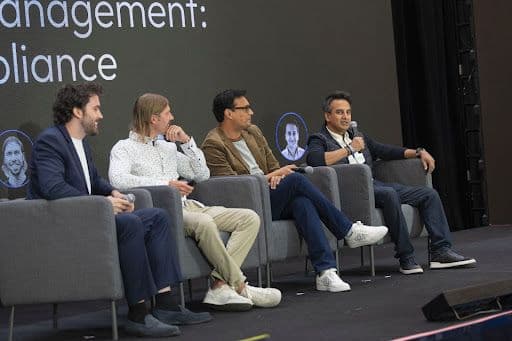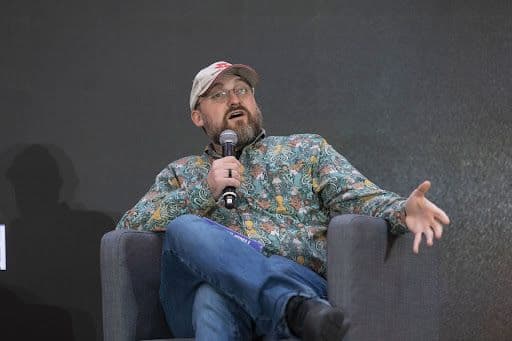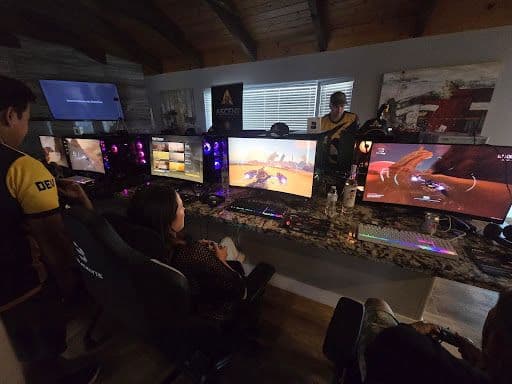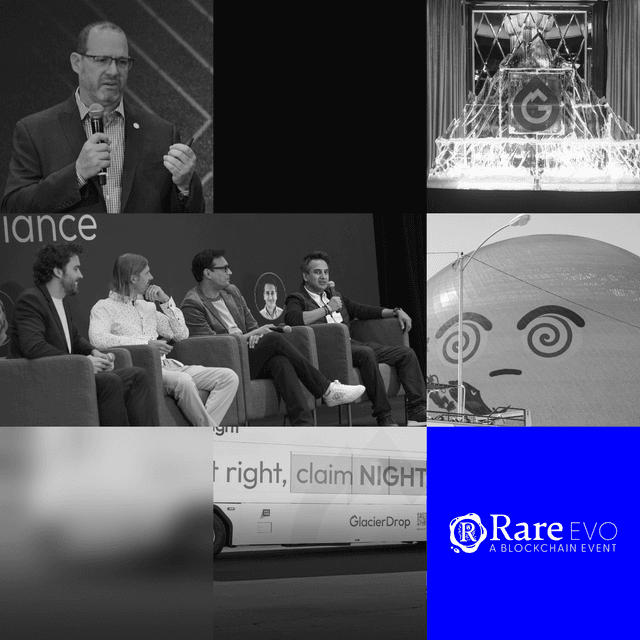Conferences serve as a stage for sharing new ideas and celebrating success. At Rare Evo in Las Vegas, teams from the Midnight Foundation, Shielded Technologies alongside many partners and community members from across the Midnight ecosystem celebrated the launch of Glacier Drop, a key step toward the network's mainnet launch.
The long-anticipated Midnight Glacier Drop began on August 5, just in advance of Rare Evo. Glacier Drop and the multiphase NIGHT token distribution was one of the hottest topics at the event, with tens of thousands of people making claims through the Glacier Drop portal, more than one billion NIGHT tokens have already been claimed.
The design of the Glacier Drop token distribution is a foundational element for building a network capable of delivering rational privacy across Web3 ecosystems. The NIGHT token distribution first invites participants from eight established blockchain communities, then expands through a second phase, the Scavenger Mine, to allow anyone to be part of the Midnight network.
This strategy for widespread participation is critical. A network's properties, especially one designed for rational privacy, are defined by its community of users. Broad initial distribution builds the decentralization and resilience required for mainnet launch. This approach reflects a cooperative vision for Web3, positioning Midnight to provide collaborative tools and a rational privacy layer across the wider entire ecosystem to add value to existing networks.
Redefining privacy for real-world use
Keynotes and panel discussions at Rare Evo focused on practical applications for privacy-enhancing technology. In his keynote, President of the Midnight Foundation, Fahmi Syed, doubled down on the Midnight Foundation’s vision for rational privacy. This approach treats privacy not as a binary switch between total transparency and complete privacy, but as a spectrum. The framework is built on providing privacy by default, with disclosure by choice, giving users, developers, and businesses granular control over how much information they share.

Syed explained that institutional adoption of blockchain technology is blocked by the absolute transparency of public ledgers. Organizations are unwilling to place sensitive commercial or customer data on-chain if it is visible to everyone. The solution is an architecture that balances the need for confidentiality with regulatory compliance.
This theme continued in a panel discussion featuring Syed, and ecosystem partners Dustin Plett of Balance, and Sanjeev Birari of Zoniqx. The speakers addressed how privacy-first solutions can integrate with existing ecosystems, allowing institutions to meet regulatory requirements without sacrificing user agency or the ability to conduct private transactions.

A technical foundation for a fourth-generation network
Eran Barak, CEO of Shielded Technologies, the core developer of the Midnight network, provided a technical overview of the solutions Midnight provides. There are three core challenges that have limited mainstream adoption of Web3 technology: predictability, privacy, and composability.
Midnight’s architecture addresses these challenges with two foundational components: privacy from the ground up and a novel dual-component economic model.
A dual-component model for enhanced predictability
The network uses two distinct components to separate the cost of operations from incentives and decentralized ownership.
- NIGHT is the network’s utility token. Holding NIGHT tokens continuously generates a network resource DUST.
- DUST is the network operational resource generated by NIGHT. It is used to pay for transaction fees on the network.
Barak used an analogy to explain the model in more detail: holding NIGHT is like owning a lifetime subscription to an energy company, and DUST is the energy that is continuously generated. You can use that energy to power anything you choose, and while the energy (DUST) is used, it is continuously replenished by holding NIGHT. This design gives developers and businesses predictable operational costs.
Any person or organization that holds NIGHT can calculate its monthly transaction needs, acquire enough NIGHT to generate the DUST required and operate without exposure to price volatility of the primary assets. That gives you predictability. And there is no need to spend the NIGHT token, to execute transactions and smart contracts on the network.
Beyond predictability, this dual-component model addresses a critical challenge in Web3: achieving metadata privacy without creating regulatory risks. Shielding the gas token on a blockchain protects transaction metadata, but it raises compliance concerns if that shielded token can be freely transferred between users, as it could facilitate illicit financial activity.
By separating the utility token and tradable asset (NIGHT) from the non-transferable operational network resource (DUST), the model delivers robust privacy for on-chain activity while addressing key regulatory and compliance requirements. This solution, combined with the selective disclosure enabled by ZK-smart contracts, is what forms the technical foundation for rational privacy.
An ecosystem in action
All the speakers highlighted, in different ways, how these concepts apply to real-world business and community activities.
IOG Founder Charles Hoskinson explained in his keynote the limitations of public blockchains for commercial transactions. He explained that a business might want to negotiate custom royalty rates, a process that is impossible if all contract terms are public. "If I put it on Midnight, no one gets to see it," Hoskinson stated. "The royalties are private."

The principles were also visible in community events. Genzio, a Web3 media company, hosted a gaming house featuring an online racing tournament with project partner Ascent Rivals, demonstrating the gaming sector’s capacity for community engagement. Follow the Midnight Foundation on X for an upcoming podcast with Fahmi and Genzio.

A new architecture for decentralized applications
The presentations and demonstrations at Rare Evo showed a clear direction as Midnight gains momentum towards mainnet. The combination of rational privacy and a dual-component economic model provides a technical foundation designed to be both innovative and compliant. By making advanced zero-knowledge cryptography accessible and its operational costs predictable, this architecture creates a path for institutions and developers to build the next generation of applications on-chain.
And Glacier Drop is the first phase of a multiphase token distribution that invites everyone to contribute to a collaborative, composable, cross-chain ecosystem that is the future of rational privacy.
Check out the recap video to see the key moments from Rare Evo.
Stay informed
Follow Midnight Network on X to get all the latest news and updates about Glacier Drop and Midnight.


